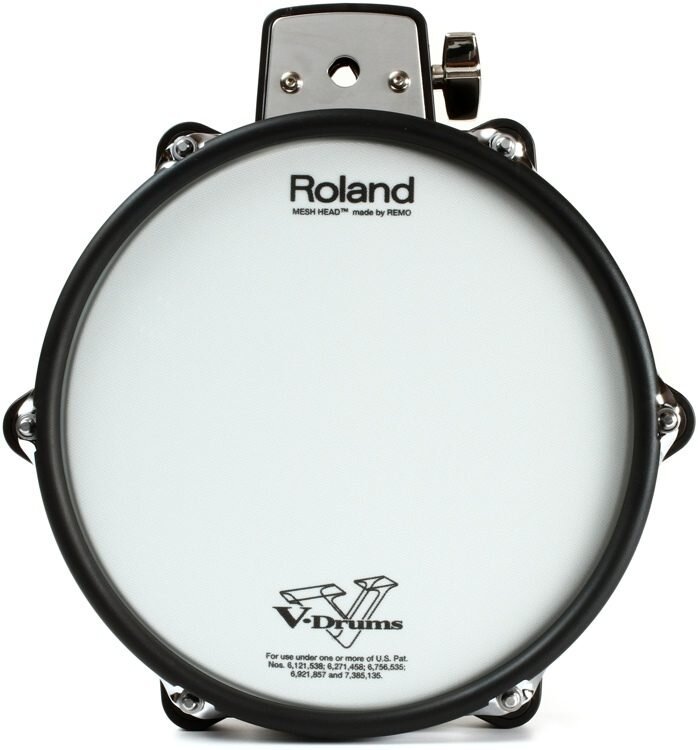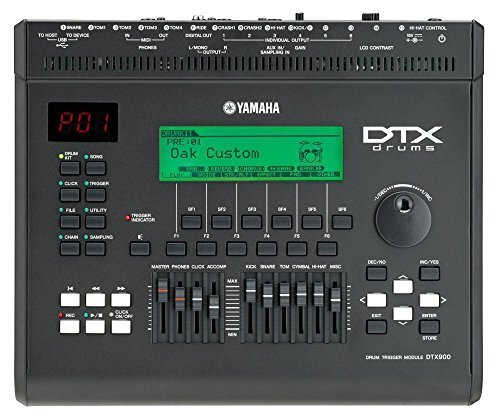Electronic Drum Sets for Beginner Drummers
If you’re confined to apartment living or a house with a bunch of other people, owning an acoustic drum set isn’t an option (unless you want to be everyone’s enemy). They take up a lot of room, they’re EXTREMELY loud, and are best suited for a space that can accommodate those demands. Thankfully, electronic drum sets have a much smaller footprint and are extremely quiet compared to their acoustic counterpart.
Brands
There are many different manufacturers of electronic drum sets, but the most trusted names are:
Roland - Alesis - Simmons - Yamaha
Each brand produces kits with different levels of functionality at different price points ranging from about $300 to more than $5,000. Of course, if you’re a beginner drum student or are just looking for a low-volume practice setup, those more expensive kits are unnecessary.
A beginner should expect to spend somewhere between $400 and $700 for a new, solid entry-level electronic drum set. But if you ever browsed electronic drum sets online or in a music store, you may have gotten a bit overwhelmed by all of the different setups and styles available. There are some specific traits to look for when considering purchasing an e-kit, which will ensure you end up with something that’s fun to play and allows you to develop good technique and solid drumming practice habits.
Rubber Pads vs Mesh Heads
Electronic drum kits come equipped with either rubber pads or mesh heads that have a sensor, which is hooked up to a drum module (otherwise known as a brain). When the sensor is tripped, it triggers the drum module to play a stored sound sample.
Rubber pads, like the one to the right, were the standard on early electronic drum kits and are common among most cheaper electronic drum sets. They sound and feel more like hitting a practice pad, but they don’t have as much of a sensitivity range compared to mesh heads (more on those in just a bit). Some lower-end rubber pads are more susceptible to getting dented if struck by especially hard-hitting drummers. But that shouldn’t be an issue for beginner drummers that are working up their fundamentals. One advantage rubber pads offer is consistency in feel. Unlike acoustic drums where each drum has a different head tension and response, all the rubber pads on an electronic drum set are the same size and density as one another, meaning they all feel the same when struck with a drum stick. The flip side, however, means that rubber bands have no way to adjust their tension or responsiveness.
Electronic drums with mesh heads, like the one pictured below, have become much more common, even among entry level drum sets over the past few years. Mesh heads are even quieter than rubber pads and offer a noticeably more responsive, realistic feel. They have a much wider sensitivity range, allowing for even the softest strokes to come through. They also have adjustable tension and are more durable than rubber pads. It’s recommended (but not totally necessary) to use drum sticks with nylon tips on mesh heads. Over time, the mesh heads wear down wooden tips and can drastically change their shape through prolonged use. Should a mesh head rip or become damaged, it’s possible to just replace the head instead of purchasing an entire new pad.
Zones and Functions
Most drum and cymbal pads contain more than one playable surface. Each surface can trigger a separate sample so it’s possible to control and blend many different sounds from the drum set. Drum pads usually have two playable zones; one on the surface of the pad or head, and another on the rim. This makes it possible to include a rim shot sound on a snare pad, or even split one pad to two entirely different sounds. For example, the rim of a tom pad can trigger a cowbell sound, while the center still triggers the sound of a tom.
Cymbal pads generally have multiple zones, too; one on the outside edge of the pad, and another on the body (or “bow”) of the pad. Some cymbal pads even have an aftertouch zone, allowing users to squeeze the edge of the pad to “mute” the cymbal. More expensive pads even have a separate playable bell zone. Hihat pads can trigger many different sounds when paired with a foot controller to offer a large expressive range. One single pad can control as many as 7 sounds; closed hihats hit on the body of the pad, closed hihats hit on the edge of the pad, open hihats on the body or the edge, partially open hihats on the body or the edge, and a separate sound sample triggered by stepping down on the pedal with your foot. All of these zones allow for a much more authentic feel and responsiveness.
Pedals vs Foot Controllers
One particularly important detail to consider when browsing electronic drum sets is type of bass drum pedal the kit uses. A lot of really cheap e-kits use a foot controller that has no beater attached to it. Frankly, these controllers don’t feel anything like an actual bass drum pedal. Beginners should avoid these types of foot controllers since the user could develop poor technique. An actual spring-loaded kick pedal with a beater (pictured below left) is a must in order to easily switch between playing an electronic drum set and an acoustic drum set.
Hihat foot controllers (pictured above right) aren’t perfect either, but using one won’t really instill any bad habits compared to a bass drum foot controller. Hihat controllers are standard on almost all beginner electronic drum sets. Higher-end models of hihat pads attach to a standard hihat pedal, providing a much more realistic responsiveness and feel. Drummers that have some experience playing an acoustic drum set might be thrown off from playing a hihat pad that doesn’t actually move according to the motion of the pedal, but that’s nothing a little bit of practice on an e-kit won’t quickly remedy.
Getting the Sound Out
Most kits can plug into a computer via USB or an amplifier with an instrument cable. A headphone jack is also standard on drum modules so no additional hardware is necessary to hear yourself playing (unless you don’t already own headphones). You can send a MIDI signal from the drum computer into a DAW (digital audio workstation) to trigger sounds from within music software (like GarageBand, Reaper, Ableton, etc.). Linking up an electronic drum set to your computer also grants you the ability to record your playing without needing to purchase an audio interface, hundreds (or thousands) of dollars worth of microphones, or the audio engineering knowhow to record and mix an acoustic drum set. The drum computer does it all for you!
And this leads to arguably the best thing about electronic drum sets - they can sound like any combination of drums, cymbals, and percussion instruments imaginable. Even entry-level drum modules come loaded with dozens of preset kits and sound samples users can use to assemble their own drum sets. Most drum computers also allow users to upload their own sound samples, too. Want to completely change your drum sound from heavy metal to cocktail jazz? You can do that by simply turning a dial or pressing a button. You don’t have to worry about owning different kits for different playing situations, what types of heads to use, tuning, etc. Drum modules are hundreds of different drum sets packed into a little box. Convenient!
Most drum modules also contain practice tools such as a metronome, the ability to record yourself directly into the drum computer (may require an SD card), and the ability to load in songs and audio files, which can be slowed down for the purposes of practicing and learning by ear.
Ultimately, lots of entry-level electronic drum sets contain similar features, but a solid kit will cost between $400 and $700. Most beginner drummers prefer kits with mesh heads since they are the quietest option and feel more similar to acoustic drums. It’s important to practice on a drum set that uses a real bass drum pedal to prevent the development of poor technique. Experimenting with the various sounds and drum kit presets stored on the module is a great way to stoke inspiration and get the most out of what electronic drum sets can offer.
All of our instructors here at Loudlands Music Lab draw from years of experience studying, playing, and performing on the drums in every capacity imaginable. Interested in starting your drumming journey or taking your skills to the next level? Schedule a trial drum lesson near Somerville to get closer to your goals!








